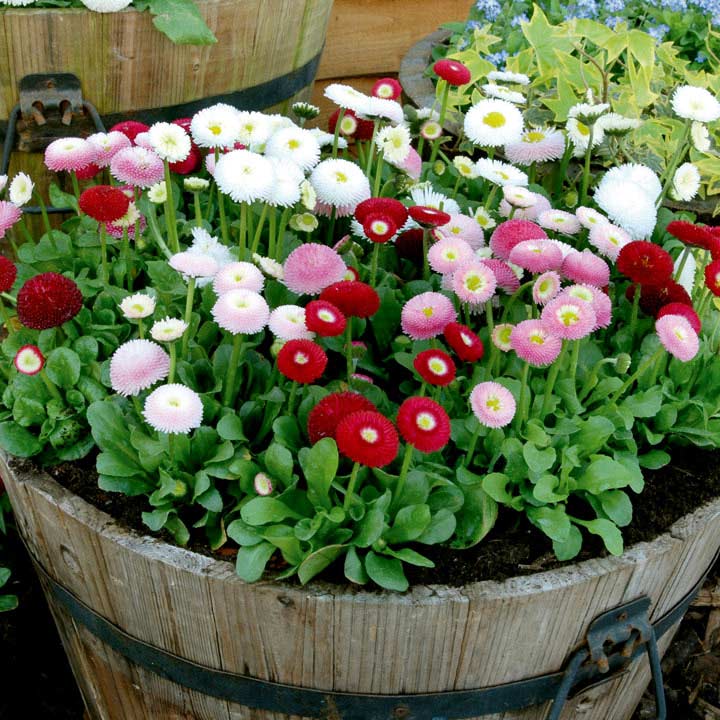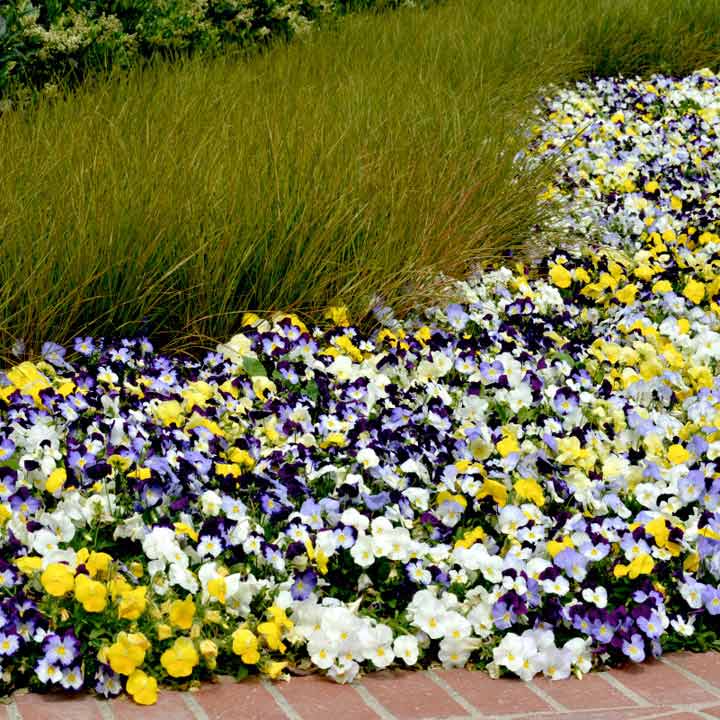Last Updated on July 28, 2025 by the Dobies Horticultural Team
Winter bedding plants make it easy to create colourful displays that keep your garden looking great even through the cold winter months. Whether you’re after blooming borders, containers full of colour, or showy beds, we’ve selected our favourite varieties. So discover our top 10 winter bedding plants today, and fill your garden with stunning floral scenes even after the temperature has dropped!
1. Bellis
Compact hardy perennials with multitudes of delicate quilled petals in pretty pom-poms, Bellis plants are packed with colour. For beautiful displays that flower twice a year, choose Bellisima Mixed – after flowering September-November they will overwinter to produce a second flourish from February-March!
How to care for Bellis plants
Plants benefit from regular deadheading to extend the flowering period and encourage more blooms to be produced.
2. Forget-Me-Not

Forget-me-nots produce clusters of dainty flowers that will self-seed, so you can enjoy their colour year after year. Choose Mon Amie Mixed for double the joy – this variety is a breeding breakthrough as it’s the first to flower in both the autumn and the spring.
How to care for Forget-Me-Not plants
Forget-Me-Not flowers spread easily and care is minimal. As a result, they grow best in a damp, shady area, but can adapt to full sun.
3. Pansies
Pansies are perfect for brightening your winter hanging baskets and pots, plus they’ll create flurries of flowers in your borders. Low-growing and with large, hardy, striking flowers, they are available in an amazing variety of colours.
How to care for Pansy plants
Plant pansies in rich, fertile, well-draining soil. Grow them in sun or partial shade.
4. Polyanthus
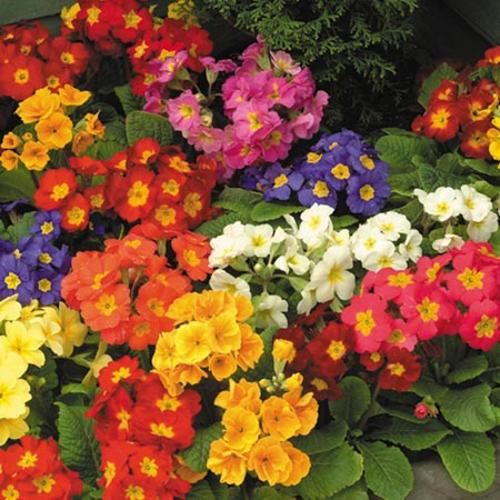
Polyanthus offers a lovely late winter display, with plants carrying bunches (umbels) of long-lasting blooms on each thick stem. Perfect for pots, window boxes and borders, try Spring Fever for improved winter hardiness, plus an impressively large number of blooms.
How to care for Polyanthus plants
Plant in sun or semi shade. Deadhead faded blooms to encourage more flowers to form.
5. Wild Primroses
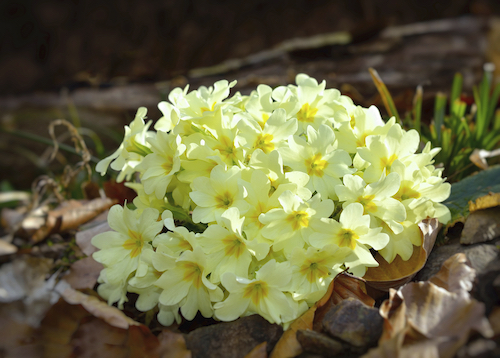
Primrose Vulgaris (pictured) is one of our most loved native flowers, with pretty clusters of pale lemon flowers. Great for naturalising, perfect for shady areas and fast growing. Plant in patio pots for beautiful, scented flower displays.
Primula veris is a beautiful old-fashioned endangered wildflower with pretty clusters of delicately scented bright yellow flowers on stalks above rosettes of soft green foliage. Winner of the RHS Award of Garden Merit and an RHS Perfect for Pollinators variety.
How to care for wild Primula plants
Water primroses regularly during hot periods. Deadhead faded flowers to encourage more blooms.
6. Primulas (Primroses)

Primroses are available in a variety of vivacious colours and are ideal for naturalising as they will self-seed, offering year after year of cheerful colour. In addition to container and border growing, plant them under hedges and trees. Try Primula Rhubarb & Custard a unique and beautiful primrose.
How to care for Primrose plants
Primroses prefer cool, semi-shaded areas and will thrive in well-drained yet moist soil. Overwatering pots can lead to rot.
7. Violas
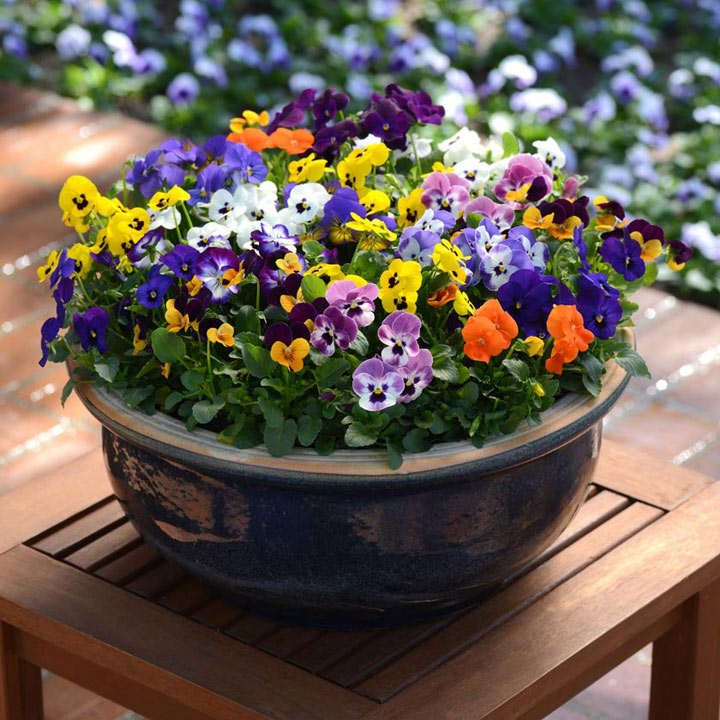
Violas will paint your autumn and winter flower displays with splashes of vibrant colour. Varieties flower from October to May, so you can enjoy wonderful violas month after month. Compact and beautifully eye-catching, use them in beds or pots for a pop of colour wherever your garden needs it.
How to care for Viola plants
Grow Viola plants in well-drained soil in sun or partial. Water regularly and feed occasionally. Overwatering in winter may lead to root damage. Deadhead regularly to encourage new blooms.
8. Wallflowers
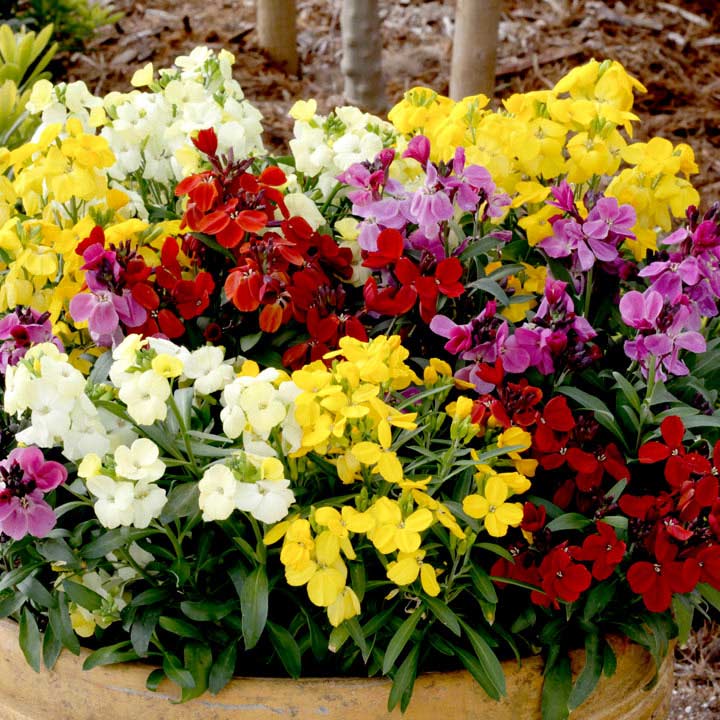
Wallflowers are loved for their sweet scent, fabulous array of colours and long-lasting blooms. They will look fabulous in pots and containers, plus borders and beds.
Try Wallflower Sugar Rush – an award-winning and very hardy British bred F1 variety developed for our climate. It flowers in the late autumn, early winter and again in spring (if not continually!) Ideal for cutting too.
How to care for Wallflower plants
Wallflowers thrive in even the poorest soils and grow well in sun or shade. Keep the soil moist and feed occasionally. Deadheading plants will encourage more blooms.
9. Garden Ready Winter Bedding Lucky Dip
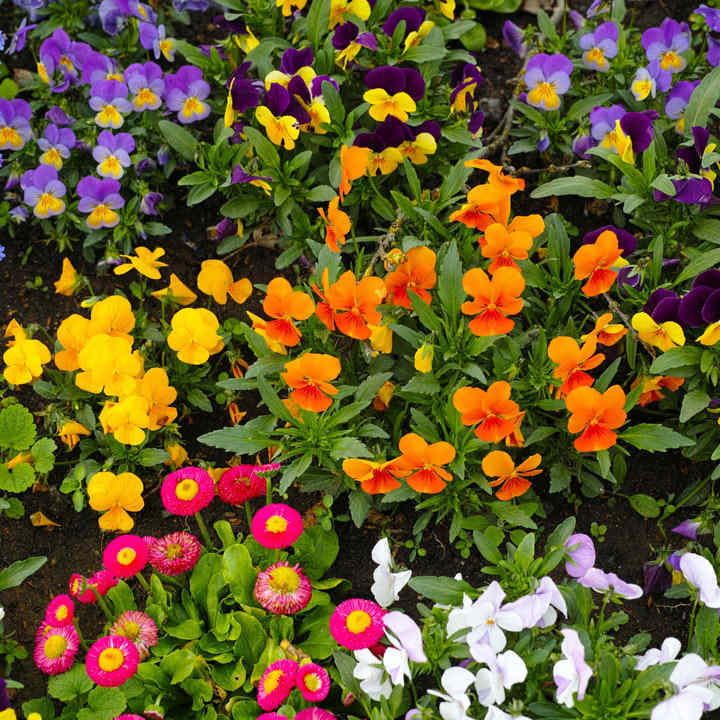
On the shortest days of the year, what better way to brighten up your garden than with a winter bedding lucky dip of 60 garden ready radiant Primroses and Polyanthus plug plants! Perfect for your winter and early spring displays, save 40% with our choice of cheerful winter bedding plants.
10. Our Selection of Winter/Spring Bedding plants
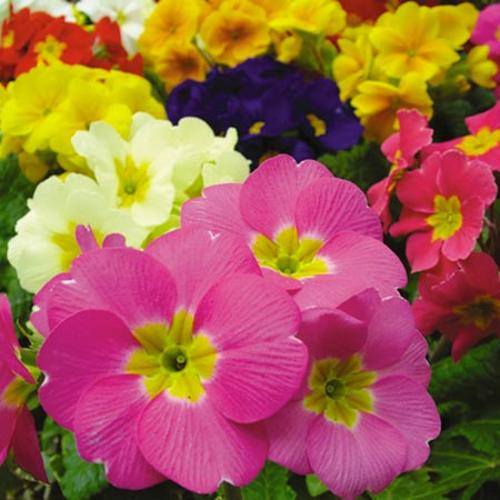
The perfect selection of bedding plants for your winter/spring displays at a fraction of the cost! This winter bedding plant selection is a great collection of 18 x 9cm plants, chosen at random from our amazing range. All you need to do is plant them!
We hope we’ve answered all your questions when it comes to what flowers to plant for stunning autumn/winter colour. If you think we’ve missed any varieties, please leave us a comment or let us know on social media. For more advice on growing your own fruit, vegetables and flowers, visit our growing guides now.


